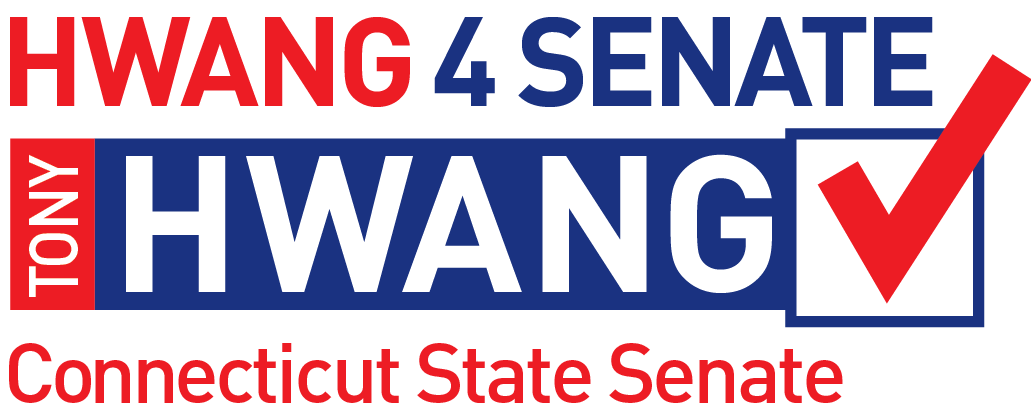The Office of the Governor provided the following updates as of 8:30 p.m. on Monday, August 24, 2020:
Data updates on testing in Connecticut
The following is a summary of the day-to-day newly reported data on cases, deaths, and tests in Connecticut.
| Overall Summary | Statewide Total
(includes confirmed and probable cases) |
Change Since Sun, August 23 |
| COVID-19 Cases | 52,040 | +29 |
| COVID-19-Associated Deaths | 4,463 | +2 |
| Patients Currently Hospitalized with COVID-19 | 59 | +3 |
| COVID-19 PCR Tests Reported | 1,080,637 | +4,992 |
County-by-county breakdown:
| County | COVID-19 Cases | COVID-19 Deaths | COVID-19 Hospitalizations | ||
| Confirmed | Probable | Confirmed | Probable | ||
| Fairfield County | 17,916 | 706 | 1,099 | 313 | 15 |
| Hartford County | 12,538 | 646 | 1,105 | 319 | 15 |
| Litchfield County | 1,588 | 70 | 118 | 21 | 0 |
| Middlesex County | 1,373 | 63 | 154 | 38 | 5 |
| New Haven County | 13,091 | 433 | 960 | 150 | 20 |
| New London County | 1,453 | 67 | 79 | 27 | 4 |
| Tolland County | 1,028 | 62 | 51 | 14 | 0 |
| Windham County | 770 | 10 | 14 | 1 | 0 |
| Pending address validation | 214 | 12 | 0 | 0 | 0 |
| Total | 49,971 | 2,069 | 3,580 | 883 | 59 |
For several additional graphs and tables containing more data, including a list of cases in every municipality, visit ct.gov/coronavirus and click the link that is labeled, “COVID-19 Data Tracker.”
For more information visit ct.gov/coronavirus and click the link that is labeled, “COVID-19 Data Tracker.”
Governor Lamont signs 67th executive order related to COVID-19
Executive Order No. 7OOO enacts the following provisions:
- Extension of expanded outdoor dining: Extends previously enacted provisions regarding outdoor dining through November 12, 2020.
- Modification of the extension of 30-day period of credit for liquor permittees: Modifies the period of credit available to certain liquor permittees so that the maximum period of credit shall be 60 days after the date of delivery.
- Extension of eviction moratorium: Extends the previously enacted moratorium on residential evictions to October 1, 2020. (More information on increased rental assistance program to make payments to landlords available here)
- Resumption of certain requirements and deadlines regarding civil and family matters: Amends a previously enacted executive order regarding defaults and nonsuits in civil and family matters.
| **Download: Governor Lamont’s Executive Order No. 7OOO
|
Department of Public Health issues COVID-19 alert to Danbury after significant spike in new cases
The Connecticut Department of Public Health on Friday evening issued a COVID-19 alert for Danbury after a significant increase in cases in the last two weeks, with much of the outbreak related to recent domestic and international travel. Connecticut is requiring anyone traveling to the state from many other U.S. states to self-quarantine for 14 days upon arrival. In addition, the CDC recommends anyone returning from international travel from countries with wide-spread transmission of COVID-19 to self-quarantine for the same period of time.
The Department of Public Health is coordinating with municipal and local health officials in Danbury to get the word out among community centers and churches to take extra precautions immediately. Those precautions include staying home when possible and limiting outings, wearing masks anytime you leave home, limiting indoor gatherings to only those you live with, refraining from attending large church services for the time being, and not attending large outdoor gatherings.
Between August 2 to 20, Danbury recorded at least 178 new COVID-19 cases, a sharp increase over the previous two-week period when only 40 new cases were recorded.
To find a testing site near you, visit ct.gov/coronavirus. For more information or any questions, reach out to the Danbury Health Department at 203-797-4625 or by email to healthdept@danbury-ct.gov.
Weekly update to the regional travel advisory: Alaska and Delaware added, Washington removed
The regional travel advisory between Connecticut, New Jersey, and New York that directs incoming travelers from states with a significant community spread of COVID-19 to self-quarantine for a 14-day period was updated today and now includes the states of Alaska and Delaware on the list of impacted locations. Meanwhile, the state of Washington has been removed.
The quarantine applies to any person arriving from a state with a positive test rate higher than 10 per 100,000 residents over a 7-day rolling average or a state with a 10 percent or higher positivity rate over a 7-day rolling average.
As of today, the full list of locations meeting this criteria includes:
- Alabama
- Alaska
- Arkansas
- Arizona
- California
- Delaware
- Florida
- Georgia
- Hawaii
- Iowa
- Idaho
- Illinois
- Indiana
- Kansas
- Kentucky
- Louisiana
- Maryland
- Minnesota
- Missouri
- Mississippi
- Montana
- North Carolina
- North Dakota
- Nebraska
- Nevada
- Oklahoma
- Puerto Rico
- South Carolina
- South Dakota
- Tennessee
- Texas
- Utah
- Virgin Islands
- Virginia
- Wisconsin
For more information visit ct.gov/Coronavirus/travel.
Guidance for decision-making regarding the use of in-person, hybrid (blended), or remote learning models in Connecticut schools during COVID-19
The Connecticut Department of Public Health (DPH) and State Department of Education (SDE) have developed a framework and key metrics to guide local district decision-making on the use of remote versus in-person learning for the fall. This includes indicators of the spread and prevalence of COVID-19 in the community, as well as the physical and operational ability of schools to implement strategies to mitigate spread.
DPH and SDE recommend using the number of new cases, adjusted for population, as the key leading metric for community spread with suggested thresholds for differential risk categories. Each week, DPH, SDE, and local health departments will review the public health data and make any recommended changes between the “low,” “moderate,” and “high” categories by county. Leading and secondary indicators will also be updated by DPH on a weekly basis.
The data is published online and made available as part of the State of Connecticut’s Open Data portal.
DPH & SDE say that the “low” and “moderate” categories indicate conditions in the area are appropriate for schools to provide at least a partial in-school option to students. For districts in the “low” or “moderate” categories that decide not to provide an in-school option, an exception review is required from a panel with representatives from the SDE, DPH, and the State Board of Education. As district and building-level decisions will ultimately be made at the local level, superintendents are advised to consider developing an advisory group consisting of their school medical advisor, local health director, and school nurse leader to consult and inform decision-making.
| **On the Web: Connecticut School Learning Model Indicators |
Department of Aging and Disability Services provides guidance on the reopening of senior centers
The Connecticut Department of Aging and Disability Services today released a document providing guidance for senior centers that will allow for the safe reopening of their facilities. The guidance was developed in partnership with senior centers, municipalities, and state and local health representatives. It is intended to provide senior centers with the discretion to expand the virtual programs and services that they have been providing during the pandemic beginning September 1.
Guidance provided to senior centers as they begin their reopening planning includes:
- Capacity limits
- Cleaning protocols
- Use of Personal Protective Equipment
- Contact Tracing
- Training and Certification
The entire reopen guidance document can be found on the Department of Economic and Community Development’s website under Phase II of the reopen guidelines. Each local senior center throughout the state will be making their own individual decisions regarding specific opening timelines and available programs.
| **Download: Guidance for the reopening of senior centers
|
Lamont administration receives interim report on COVID-19 in Connecticut’s long-term care facilities
The Lamont administration today announced that it has received an interim report conducted by an independent, third-party research firm reviewing the response to COVID-19 in Connecticut’s nursing homes and assisted living facilities.The interim report can be read online at portal.ct.gov/Coronavirus/Long-Term-Care-Facility-review.
Mathematica is due to deliver a final report to the state by the end of September.
Weekly update on the impact of COVID-19 on nursing homes and assisted living facilities
The following documents contain the weekly data regarding each of the nursing homes and assisted living facilities in Connecticut that have reported positive cases of COVID-19 among their residents.
| **Download: Data on nursing homes in Connecticut as of August 18, 2020
**Download: Data on assisted living facilities in Connecticut as of August 18, 2020 |
Department of Public Health investigating COVID-19 outbreak at Three Rivers Nursing Home in Norwich
The Connecticut Department of Public Health (DPH) is investigating a COVID-19 outbreak at Three Rivers Nursing Home in Norwich that so far has resulted in the infections of 13 residents and two staff members. One resident has since died, and several are hospitalized.
More information here.
Connecticut producers urged to enroll in Coronavirus Food Assistance Program
The Connecticut Department of Agriculture is urging farmers and producers in the state to apply for the U.S. Department of Agriculture’s (USDA) Coronavirus Food Assistance program to provide vital financial assistance to absorb sales losses and increased marketing costs associated with the COVID-19 pandemic. As of Monday, August 17, 2020, approximately 100 applications for Connecticut producers have been approved, totaling $6.88 million in payments.
The USDA is accepting applications now through September 11, 2020. Producers should apply through the Farm Service Agency at their local USDA Service Center.
In response to comments and data received by the public, USDA announced on July 9 that it would make more than 40 additional specialty crop commodities eligible for the program. Nearly 60 additional commodities were announced on August 11, including additions to specialty crops and livestock along with the inclusion of nursery crops and cut flowers, aquaculture, and certain types of eggs. In addition to these newly eligible commodities, USDA also expanded funding categories for several commodities and adjusted payment rates for others.
For more details on the program, visit farmers.gov/cfap.
The post Sen. Hwang Covid-19 Update for the week of August 17, 2020 appeared first on Connecticut Senate Republicans.

